Best Cameras For Wildlife Photography (2021)
The best cameras in 2021
Included in this guide:
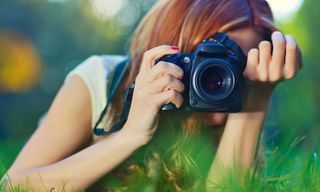
Choosing the best camera is both easier and harder than ever.
It's easier because nearly every camera these days is an incredible shooting machine packed with photographic tech to help you take the best images. There are 17 options in our best cameras list, and every single one of them comes highly recommended.
But it's also harder, because there are simply so many options out there, and in so many different forms. Mirrorless cameras and DSLRs offer increasingly high-resolution sensors, incredible autofocus speeds and useful features such as in-body image stabilization. Many action cameras can now shoot 5K (or higher) video. Compact cameras are smaller and better than ever; instant cameras cuter and more fun. Plus there are sub-categories such as the best cameras for vlogging to consider.
And you have to factor in cost, too: the best cheap cameras can cost under $100, while a full-frame mirrorless model could set you back $10,000.
As a result, "the best camera" is a pretty subjective term — but within each type of camera there are some models that are clearly better than others. We evaluated them for picture and video quality, handling, features, and value to come up with our recommendations.
- Best DSLR cameras
- Best mirrorless cameras
Black Friday camera deals
Black Friday deals are coming soon, and if previous years are a guide then you can expect big discounts on all types of cameras and accessories.
We're tracking the early sales in our best Black Friday camera deals hub, so bookmark it now to make sure you don't miss out on a bargain. And the good news is that there are already some great deals on offer, including the Sony a6600 and Sony ZV-1 which both feature in this list, plus the like of the Fujifilm Instax 11, Canon EOS R, Nikon Z5 and Olympus OM-D E-EM5 III.
What are the best cameras?
We think the best camera for most people is the Sony Alpha a6100. This mirrorless camera is compact, shoots excellent photos and video, and can be had for around $750 with a 16-50mm lens. The Sony a6100 has a 24MP sensor, records sharp 4K video, and has a fast autofocus system. Its battery life is a reasonable 420 shots, but you'll want to invest in an extra battery if you're planning to use it a lot.
If you're looking for a DSLR camera, we think the best option for most people is the Canon EOS Rebel T8i; this midrange camera boasts a 24-megapixel sensor, a wide ISO range (100-25600, expandable to 51,200), and a very good rated battery life of up to 1240 shots. It has a number of built-in guides for helping novices, and it can record video at 4K/24 fps; still a rarity for DSLRs in this price range. What's more, the T8i can record vertical video and has a microphone jack, so you can get better audio.
If you prefer Nikons, we suggest the D5600, which also takes excellent photos, handles well, and has a 3.2-inch swiveling touchscreen. It's great for experienced photographers looking for full-featured manual controls, while still including a number of assisted shooting modes to help teach and educate beginners. However, because the D5600 is a little bit older, it can only capture video at a max resolution of 1080p/60 FPS. We expect its successor, the D5700, sometime this year.
Read on for all of our top picks for the best camera.
The best cameras you can buy today
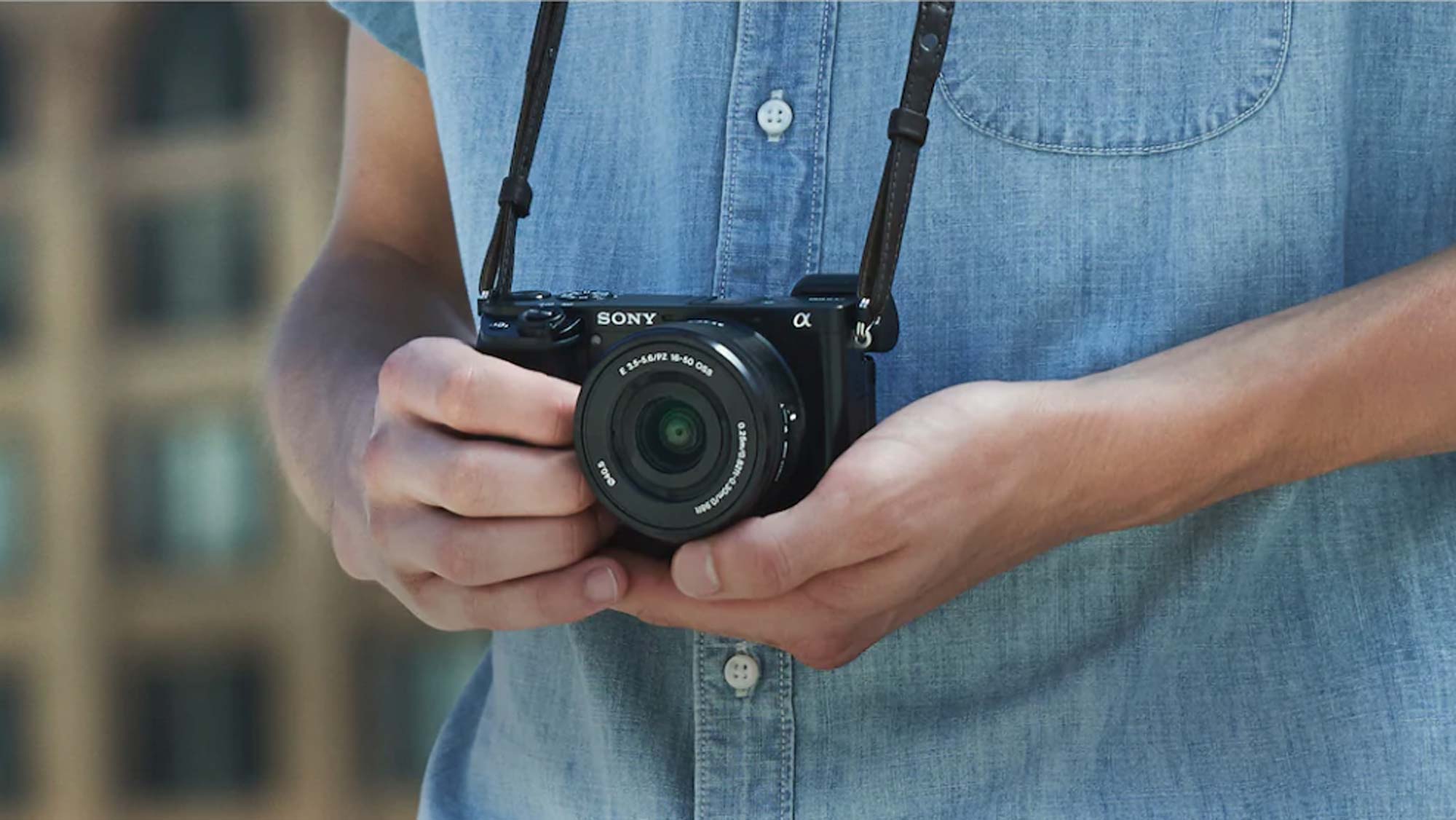
1. Sony a6100
The best camera for most people
Megapixels: 24.2 | ISO: 100- 25,600 | Shooting Speed: 11 fps | Body size/weight: 4.75 x 2.75 x 2.13 inches; 1 pound | Viewfinder: OLED | Screen: 2.95-inch touchscreen LCD | Battery Life (CIPA): 420 shots
Superfast, AI-driven autofocus system
Sharp HD and 4K video
External mic jack
Sprawling menu system
Poorly placed video-record button
With its excellent image quality, great feature set and bargain price, the Sony a6100 isn't just the best mirrorless camera — it's also the best camera overall.
The a6100 is compact and well built, with excellent ergonomics: it'll fit comfortably into your hand and all of the controls are easy to reach. In our testing, we were also impressed with the Sony a6100's ability to take sharp, clear photos no matter the situation; its intelligent, fast autofocus certainly helped, as did its 11fps shooting speed. Plus, with a rated battery life of 420 shots, you should be able to get through an entire day without needing a recharge.
The a6100 can also record 4K video, and has a microphone jack for picking up better audio. However, you'll need to look to the Sony a6500 or the a6600 if you want in-body image stabilization.
Still, that's a fair compromise at a price of around $700 — it really is a photographic bargain.
Read our full Sony a6100 review .
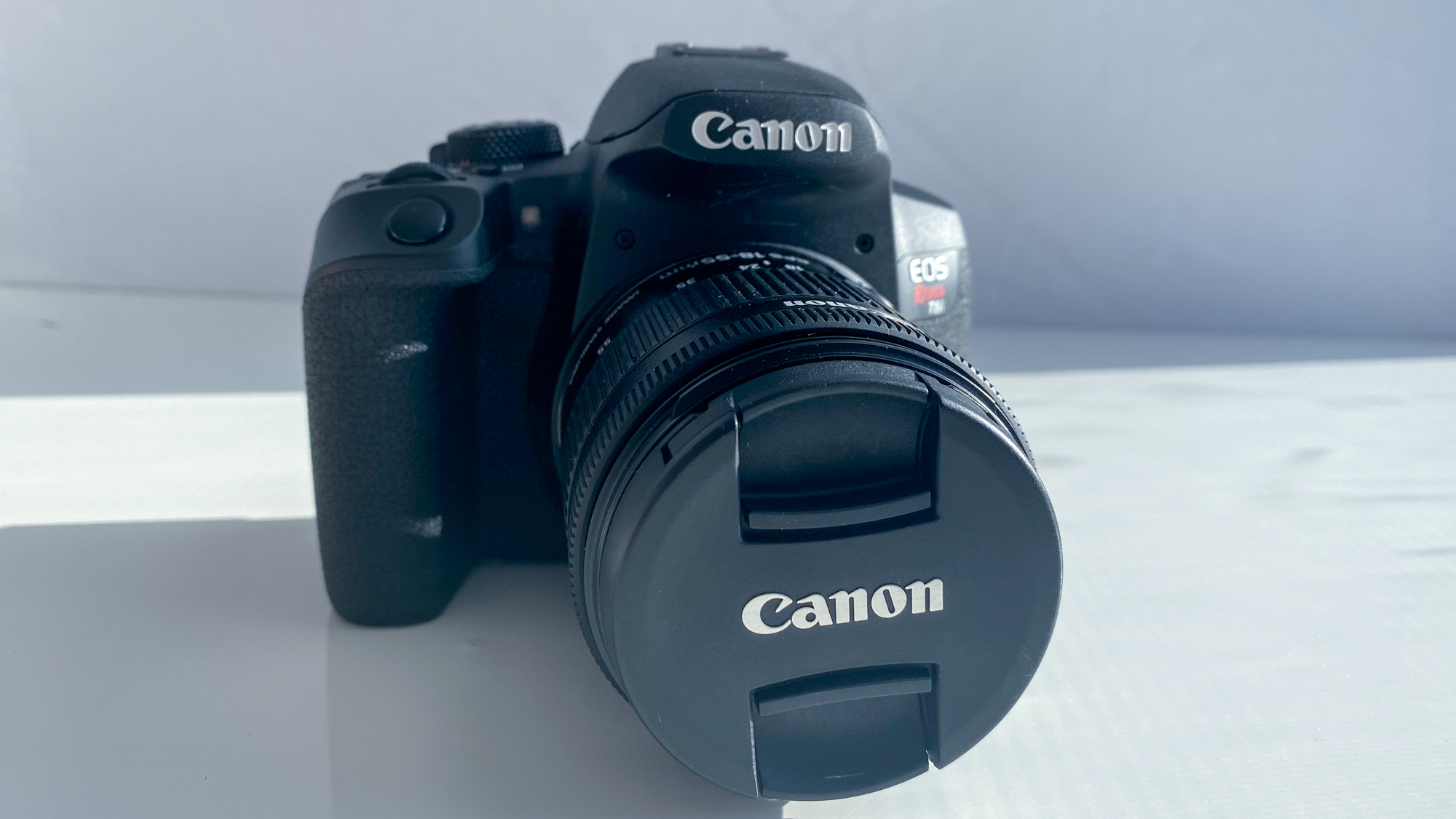
2. Canon EOS Rebel T8i
Best DSLR for most people
Megapixels: 24.1 MP APS-C | Lens Type: Interchangable | ISO Range: ISO 100-25600 | Image Stabilization: In-lens | Autofocus: 45-point phase detection | Video (Max Resolution): 4K at 24 fps | Shooting Speed: 7 fps | Display: 3.2-inch swiveling touchscreen | Wi-Fi: 802.11 b,g and Bluetooth 4.1 | Battery Life: 1240 shots (viewfinder), 360 shots (live view) | Size/Weight: 5.16 x 4 x 3 inches/18.2 ounces
Records 4K video
Easy to use
Good guides for newbies
No USB charging
Most casual photographers will find the Canon EOS Rebel T8i to be the best camera for them if they're looking for a DSLR-style system. Like its predecessors, the T8i takes excellent photos and has a number of handy built-in guides to help newbies learn the ins and outs of the camera.
The EOS Rebel T8i can also shoot video at a resolution of 4K; while the framerate is capped at 24 fps, it should suffice for those who want to capture higher-quality movies. It also has a microphone jack for better audio and can even shoot vertical video, ideal for social media.
Read our full Canon EOS Rebel T8i review .
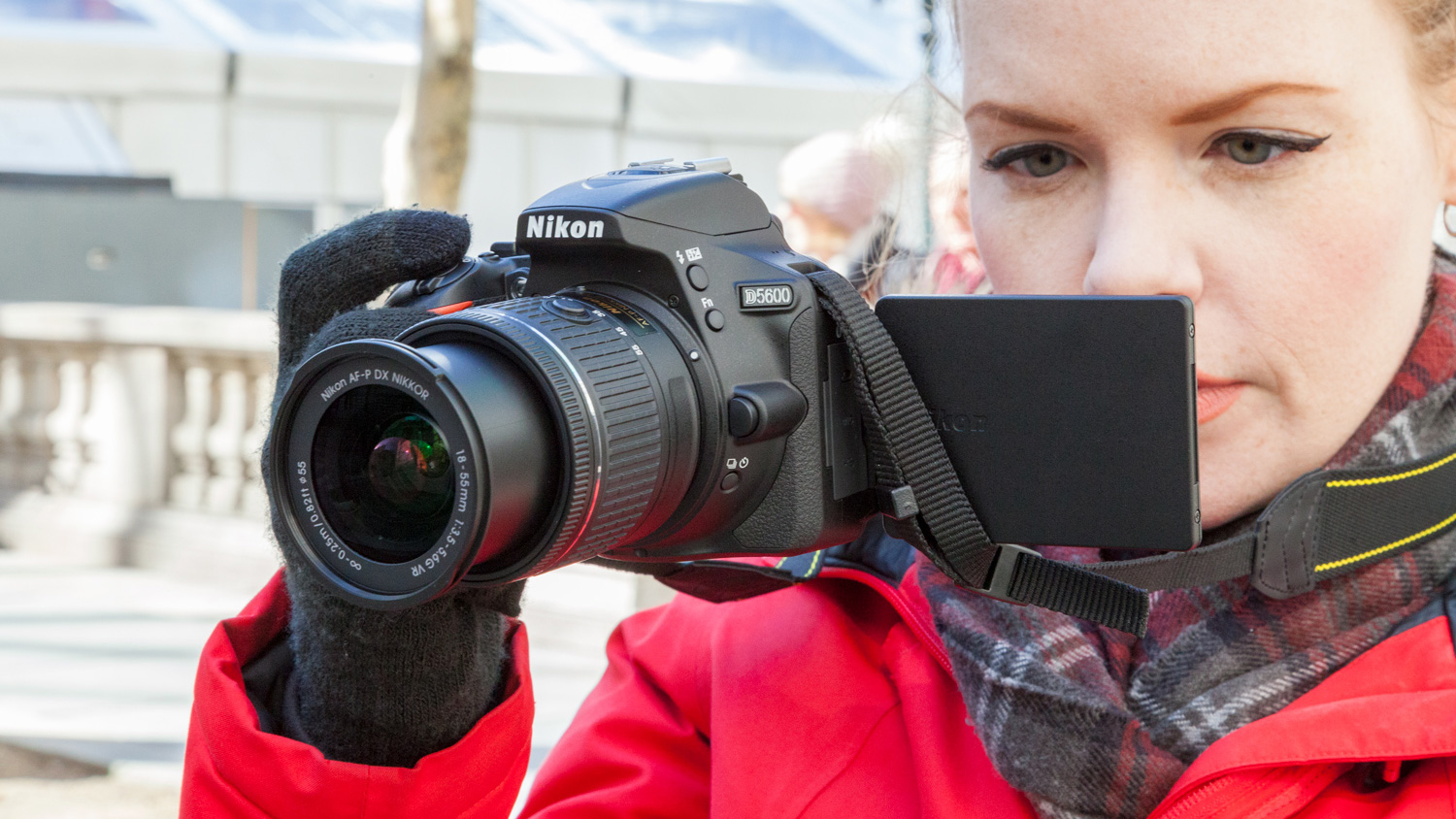
3. Nikon D5600
Best DSLR by Nikon under $1,000
Megapixels: 24.2 MP CMOS DX-format sensor | Lens Type: Interchangable | ISO Range: ISO 100-25600 | Image Stabilization: In-lens | Video (Max Resolution): 1920 x 1080 at 60 fps | Shooting Speed: 5 fps | Display: 3.2-inch swiveling touchscreen | Wi-Fi: 802.11 b,g and Bluetooth 4.1 | Battery Life: 970 shots | Size/Weight: 4.9 x 3.8 x 2.8 inches/16.4 ounces
Top-notch image quality
Responsive performance
Solid set of practical and creative features
Minimal manual control for video
No 4K video
Sporting a 24-megapixel sensor, 3.2-inch swiveling touchscreen and compatibility with a huge range of lenses, the Nikon D5600 is the best camera for most people looking for a Nikon DSLR. In our tests, we found it took great photos, and has a nice wide usable ISO range. We also liked its battery life; rated at 970 shots, we were able to easily make it through a day's worth of shooting. With Nikon's traditional d-pad and a number of dials and knobs, it's great for experienced photographers looking for full-featured manual controls, while still including a number of assisted shooting modes to help teach and educate beginners.
One of our quibbles with the D5600 is that it can only capture video at a maximum resolution of 1080p/60 fps. However, that's not unreasonable for a camera at this price, and it has a dedicated microphone jack. All in all, it's a great kit.
Read our full Nikon D5600 review .
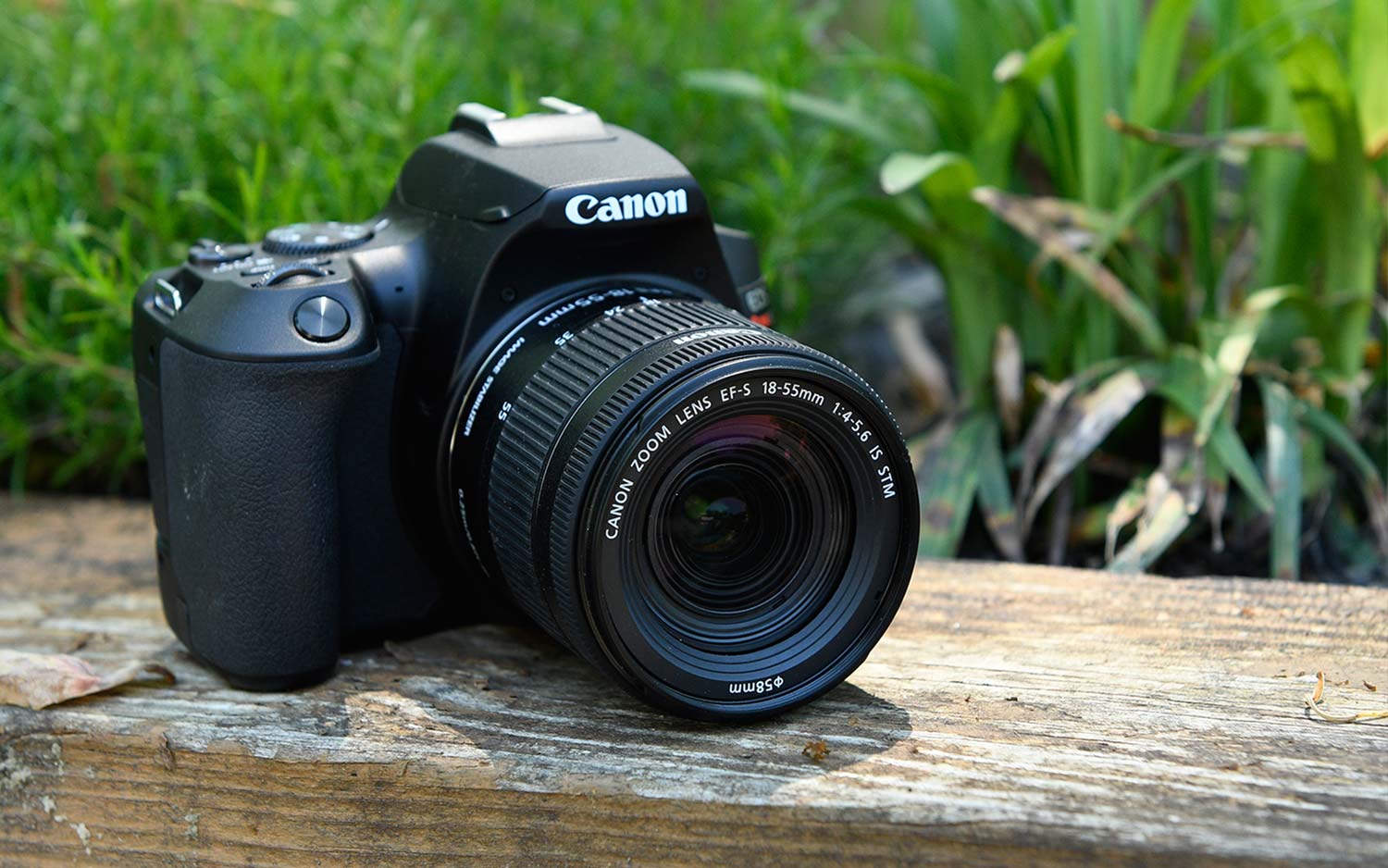
4. Canon EOS Rebel SL3
4K video on a budget
Megapixels/sensor: 24.1 APS-C | ISO Range: 100-25,600 | Max Video Resolution: 4K/24 fps | Shooting Speed: 5 fps | Autofocus: 9-point phase detection | Display: 3-inch LCD | Battery Life: 1,000 shots | Ports: USB, Mini HDMI, mic | Card Slots: one SD/SDHC/SDXC | Size: 4.8 x 3.7 x 2.8 inches | Weight: 15.8 ounces
Fully articulated touchscreen
4K video
Excellent battery life
Modest AF points
Not compatible with 3rd-party flash units
At less than $700 — and that's with a lens — the Canon EOS Rebel SL3 is one of the least expensive DSLRs that can shoot 4K video. More than that, though, this camera, which is aimed at beginners, is also very small and light, and has a bevy of in-camera guides to help novice shooters. We also like the EOS Rebel SL3's articulating 3-inch touch screen, which makes it easier to take photos from odd angles.
In general, this camera takes good photos and video, but its internal image stabilization is only moderately effective, and its hot shoe doesn't work with third-party flash units. Also, this model is aimed at beginners, so it has a limited number of autofocus points, and a fairly slow shooting speed. But, for the price, it's a great DSLR for those new to photography.
Read our full Canon EOS Rebel SL3 review .
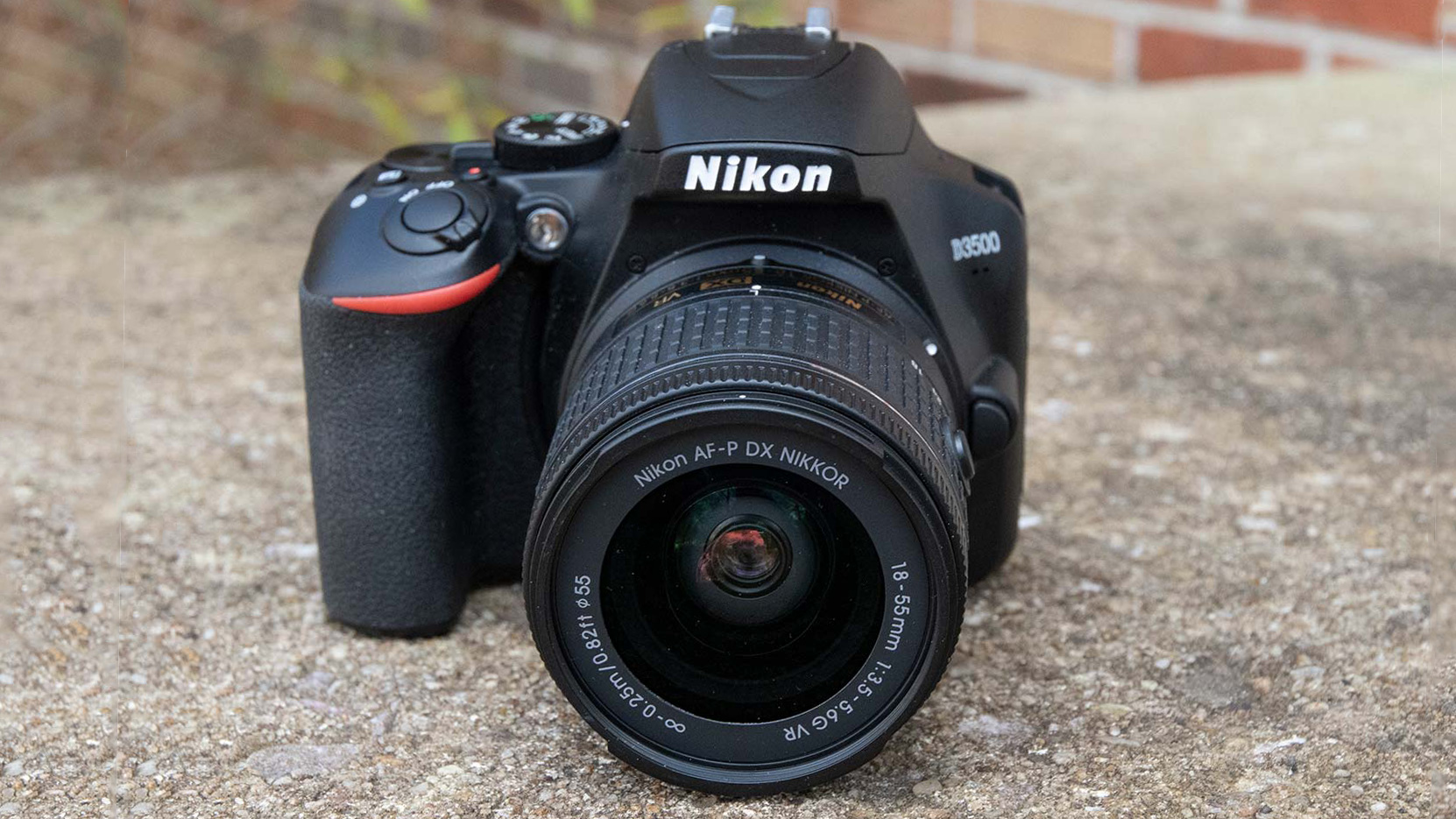
5. Nikon D3500
A great Nikon DSLR for beginners
Megapixels/Sensor: 24.3/APS-C | ISO: ISO 100-25,600 | Video (Max Resolution): 1080p/60 fps | Shooting Speed: 5 fps | Autofocus: 11 points/Phase, Contrast, Face Detection | Connections: USB, mini HDMI | Display: 3-inch LCD 921,000 dots | Wi-Fi/Bluetooth/NFC: Yes/Yes/No | Battery Life (CIPA): 1,550 shots | Size and Weight: 4.9 x 3.9 x 2.8 inches/12.9 ounces
Affordable
Excellent battery life
In-camera RAW processing
Fixed, non-touch LCD
Modest video AF performance
If you're just starting out and prefer Nikon DSLRs, one of the best cameras is the Nikon D3500. This entry-level model has a sub-$600 price — which includes a lens — and lots of in-camera guides which help explain advanced features to beginners.
We also liked the D3500's 24.3MP sensor, long battery life, and the ability to control the camera (somewhat) from your smartphone via Bluetooth. The D3500 has a 3-inch display, but it doesn't fold outward, and lacks touch capabilities, but Nikons have long held a reputation for excellent physical controls. The D3500 is no different.
If you're looking for the ability to shoot 4K video, we recommend the Canon EOS Rebel SL3, which is a bit more expensive. Still, the Nikon D3500 will shoot great photos in almost any situation, too. And its price can't be beat.
Read our full Nikon D3500 review.
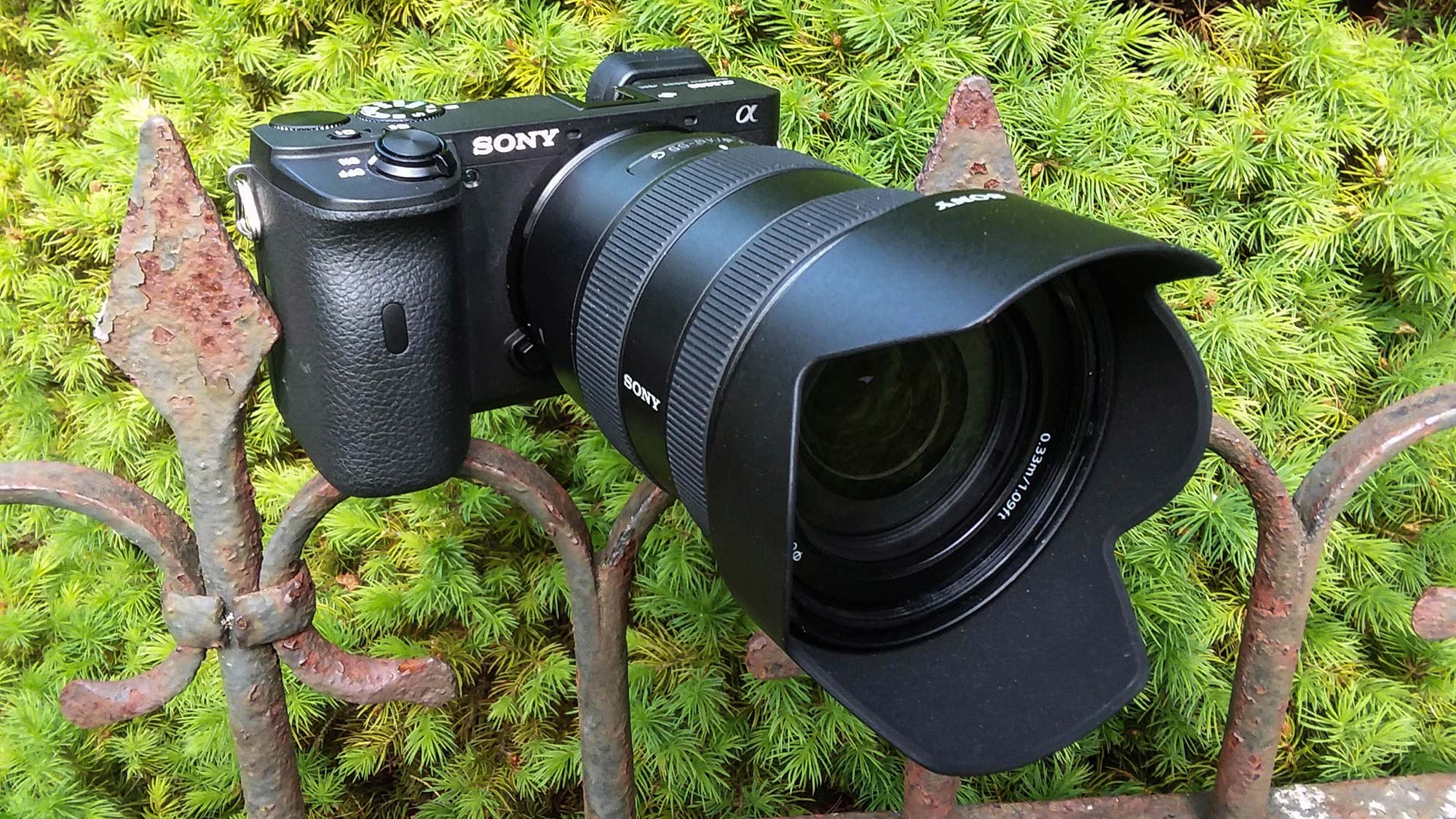
6. Sony Alpha a6600
An excellent mirrorless camera for video
Megapixels: 24.2 APS-C CMOS | Lens Type: Interchangeable | ISO Range: 100- 32000 optical (50 – 102400 with boost) | Image Stabilization: 5-axis in-body | Video (Max Resolution): 4K/60 fps | Shooting Speed: 11 fps | Display: Articulating 3-inch touchscreen | Wi-Fi: Yes | Battery Life: 720 shots | Size/Weight: 4.7 x 2.7 x 2.3 inches; 1.1 pounds
Real-time autofocus tracking
Extended eye autofocus
5-axis image stabilization
High-capacity battery
Only one memory card slot
At the top end of Sony's Alpha line of APS-C mirrorless cameras is the Sony a6600, which has everything you want: an excellent processor that delivers a wide ISO range (100-32,000), AI-enabled eye autofocusing in both still and video, 5-axis in-body image stabilization, 4K/60 fps video, and a speedy 11 fps shooting speed. Top that with a battery that can last up to 720 shots, and you've got one of the best camera options for the price.
In our Sony a6600 review, we were impressed with the image and video quality, as well as the camera's handling. It's made of a solid magnesium-alloy frame, and is both dust and moisture-resistant. It has a large, bright electronic viewfinder, as well as a 3-inch touchscreen that flips up a full 180 degrees and down 74 degrees. If you don't want to pay full freight for one of Sony's full-frame a7 cameras, the a6600 is the one to check out.
Read our full Sony Alpha a6600 review .
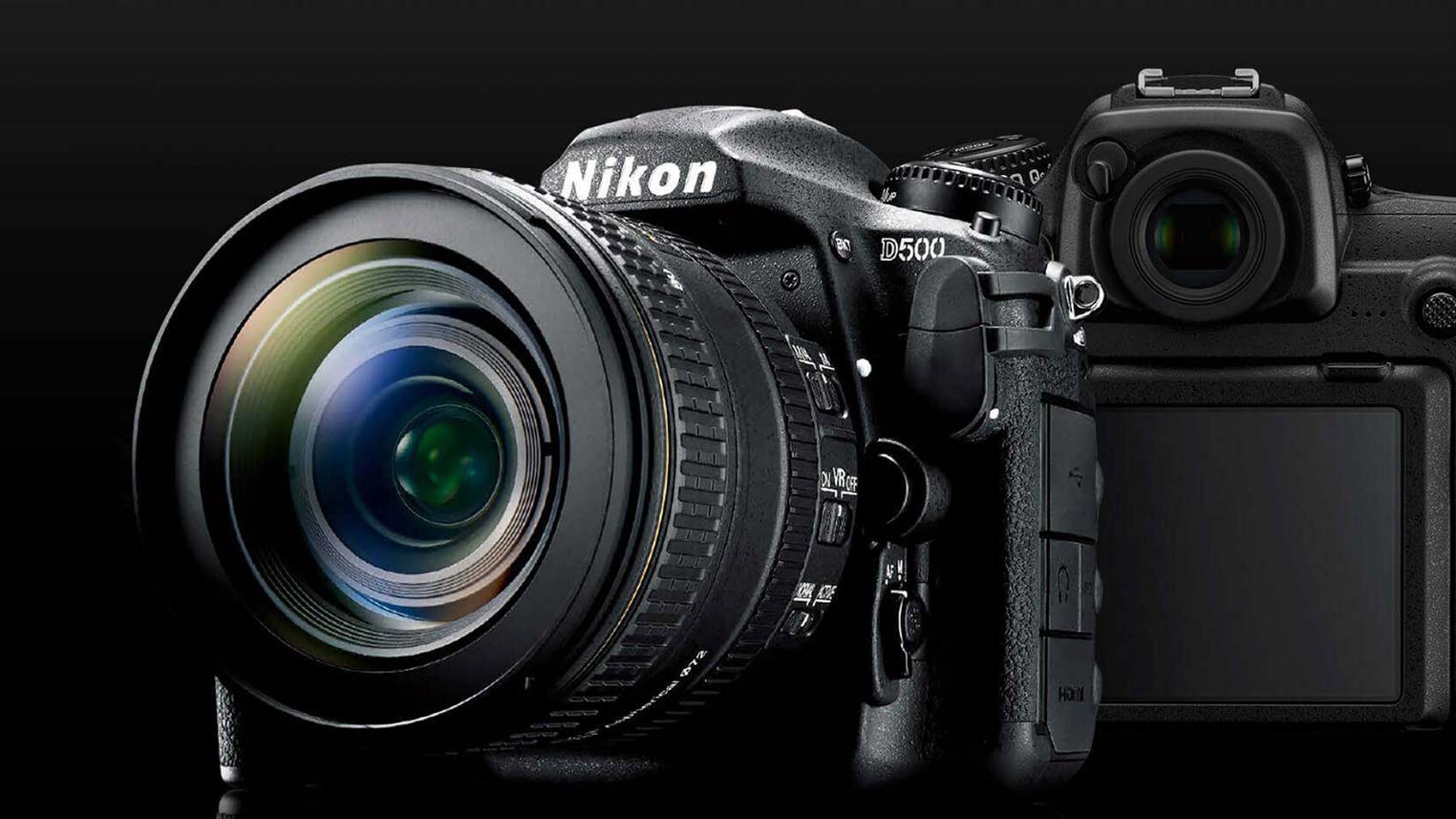
7. Nikon D500
A great enthusiast DSLR with superb image quality
Image Sensor: 20.0MP APS-C CMOS | Storage Media: SD/SDHC/SDXC and XQD | Image Stabilization: via OIS lenses | Display: 3.2-inch touch LCD | ISO: 100-51,200 (expandable to 1,640,000) | Max video resolution: 4K UHD 3,840 x 2,160/30 and 24 fps | Shooting Speed: Up to 10fps | Wireless/Bluetooth/NFC: Yes | Ports: 10-pin remote terminal, HDMI, USB, Stereo microphone and headphone jacks | Battery life (CIPA): 1,240 | Size (body): 5.8 x 4.6 x 3.2 inches | Weight: 26.9 ounces, body only
Excellent image quality
Responsive performance
Good low light capabilities
Dual card slots
Built-in time-lapse
Cropped 4K video
Less than stellar video/Live View autofocus
Limited touchscreen functionality
Though it's now five years old, the Nikon D500 remains Nikon's premier DX-series DSLR and puts many a newer camera to shame. It's a big, solid and fairly weighty thing, so if you're after something to stick in a bag and take out for a day at the beach, you might be better off with a mirrorless camera. But as semi-pro enthusiast models go, it's hard to beat. Much of that is down to its superb image quality: its 20MP stills are as good as you can get outside of more expensive full-frame models. It also has excellent autofocus and a fast shooting speed of 10 fps.
The Nikon D500 was one of the first DSLRs that could shoot 4K video, but that maxes out at 30 fps — though you do get 60 fps at 1080p. Newer (and cheaper) models will likely trump it on that front, and if video is your primary concern you'll want to look elsewhere. But for stills photographers who shoot a lot of sports or wildlife and prefer a DSLR to a mirrorless camera, it's a great option.
Read our full Nikon D500 review .
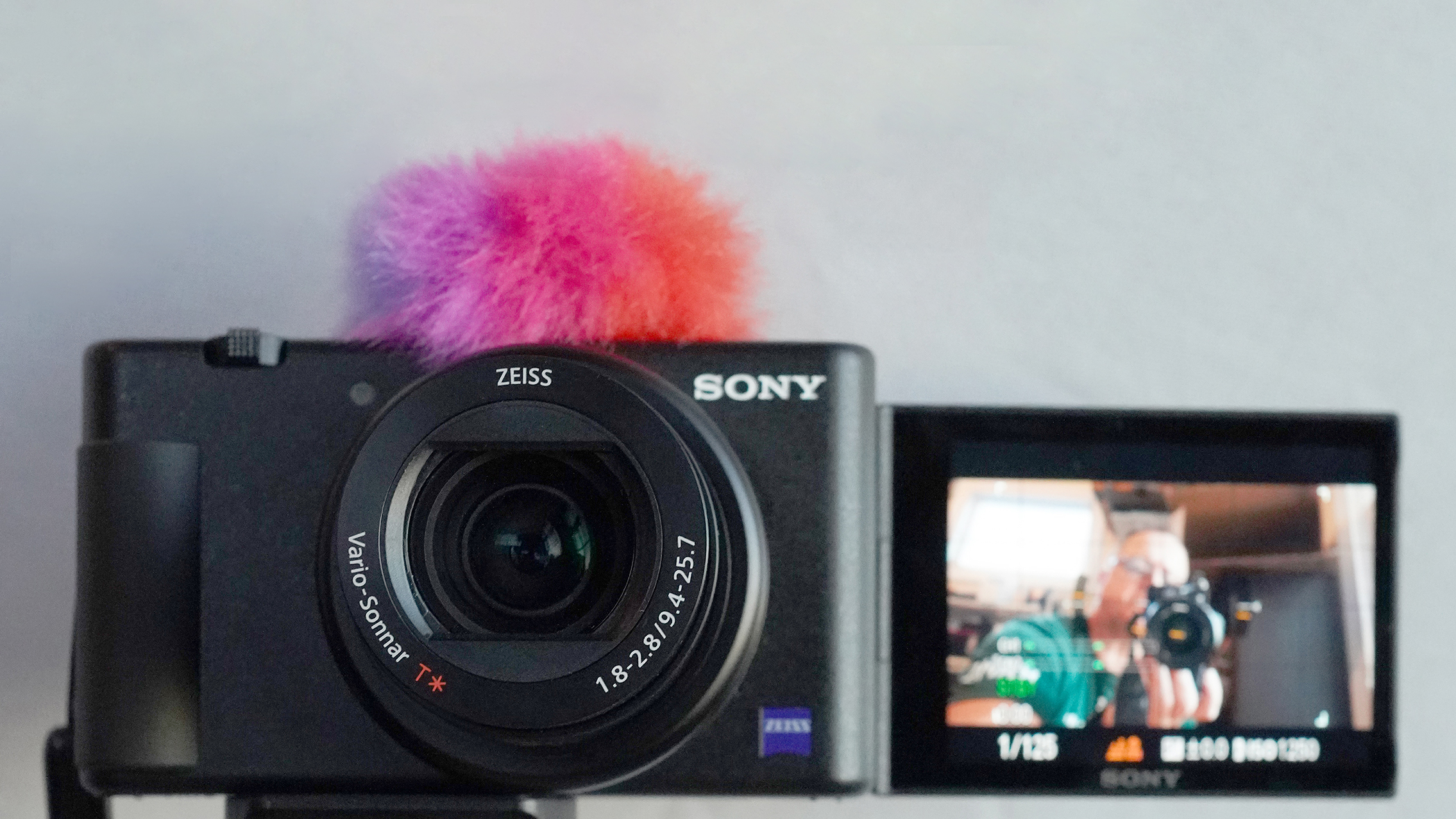
8. Sony ZV-1
The best camera for vloggers
Megapixels: 20.0MP 1-inch-type CMOS | Lens Type: Fixed zoom (24–70 mm / approx. 2.9x optical) | ISO range: 100-51,200 (expandable to 1,640,000) | Image Stabilization: Optical IS | Video (Max resolution): XAVC S 4K (3,840 x 2,160/30p at 100 Mbps) | Display: 3.2-inch touch LCD | Wi-Fi: Yes | Battery life (CIPA): Approx. 75 mins / 260 shots | Size/Weight: 4.3 x 2.4 x 1.8 inches / 9.5 ounces, body only
Powerful yet easy-to-use features
Very good quality video and stills
Excellent AF
Very good quality audio
May not be versatile enough for advanced vloggers
Image stabilization could be better
The Sony ZV-1 is the only entry in our best camera list that's aimed squarely at vloggers — and if filming yourself for videos on YouTube or similar is important to you, then it's well worth considering.
Although based on Sony's RX series of high-end point-and-shoot cameras, it comes with a number of features to make vlogging that bit easier. For instance, it has a swiveling touchscreen LCD screen that opens on the side rather than vertically, so it doesn't get in the way while filming. And it has several specialist modes, including one that smooths out skin and one that swiftly switches focus from person to product. There's also a directional mic and an included wind muff to improve audio performance.
Autofocus is generally good and the 4K video and 20MP stills are high quality too, but image stabilization isn't the best — if you're shooting on the go, a DSLR or mirrorless camera on a gimbal will be a better bet. Still, it's well priced and can also act as a webcam thanks to a firmware upgrade.
Read our full Sony ZV-1 review.
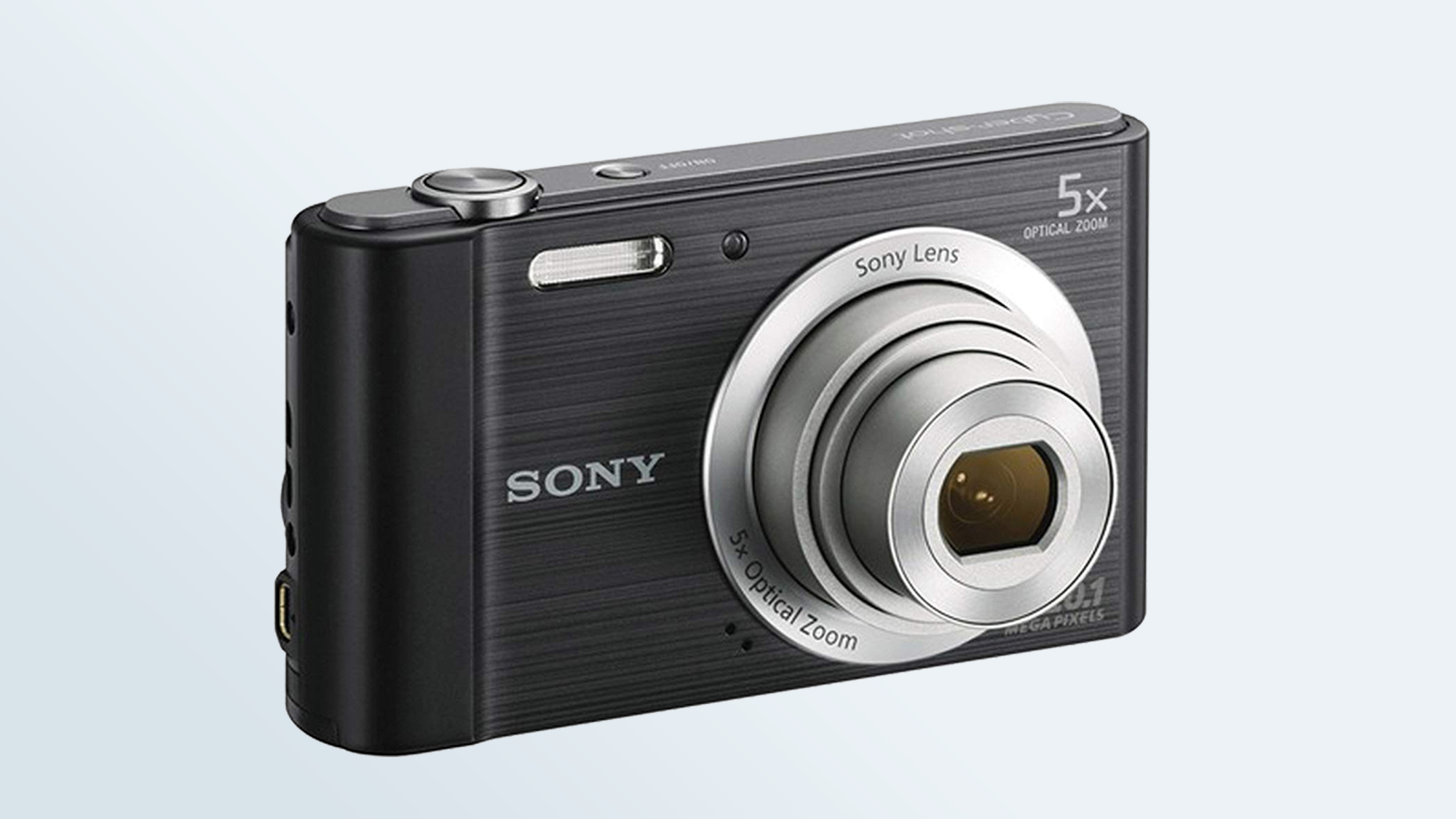
9. Sony Cyber-shot DSC-W800
The best camera around $100
Resolution: 20.1 MP | Optical Zoom: 5x | Focal Length: 26 - 130mm (35mm equiv.) | Video (Max): 720p (1280 x 720) | Size: 2.1 x 2 x 0.9 inches | Weight: 3.5 ounces
Inexpensive
Small and portable
No viewfinder
Looking for a great starter camera for your child? The Sony Cyber-shot DSC-W800 is the best camera you can find for around $100. That said, it's getting hard to find now and prices are going up. Still, if you can find it for the target price, it's nearly an impulse buy, and not such a financial hardship if you lose it or your kid drops it. Its sturdy metal chassis packs a great suite of features, including an easy panoramic shooting mode and a 5X zoom lens (26-130mm equivalent). And, measuring just 2.1 x 2 x 0.9 inches, it can slip into your pants pocket without a problem.
The W800's 20.1MP image sensor uses the older CCD technology that tends to not perform as well in dark conditions as today's dominant CMOS sensors. And while it can record video, its resolution tops out at 720p (1280 x 720), so things won't look as defined as what you'd get even with a smartphone. But it's fine for bright afternoons or night shots with flash. If you want a longer zoom, the Sony Cyber-shot DSC-W830 has an 8X zoom, but costs slightly more. Be sure to check out all our picks for the best cheap cameras.
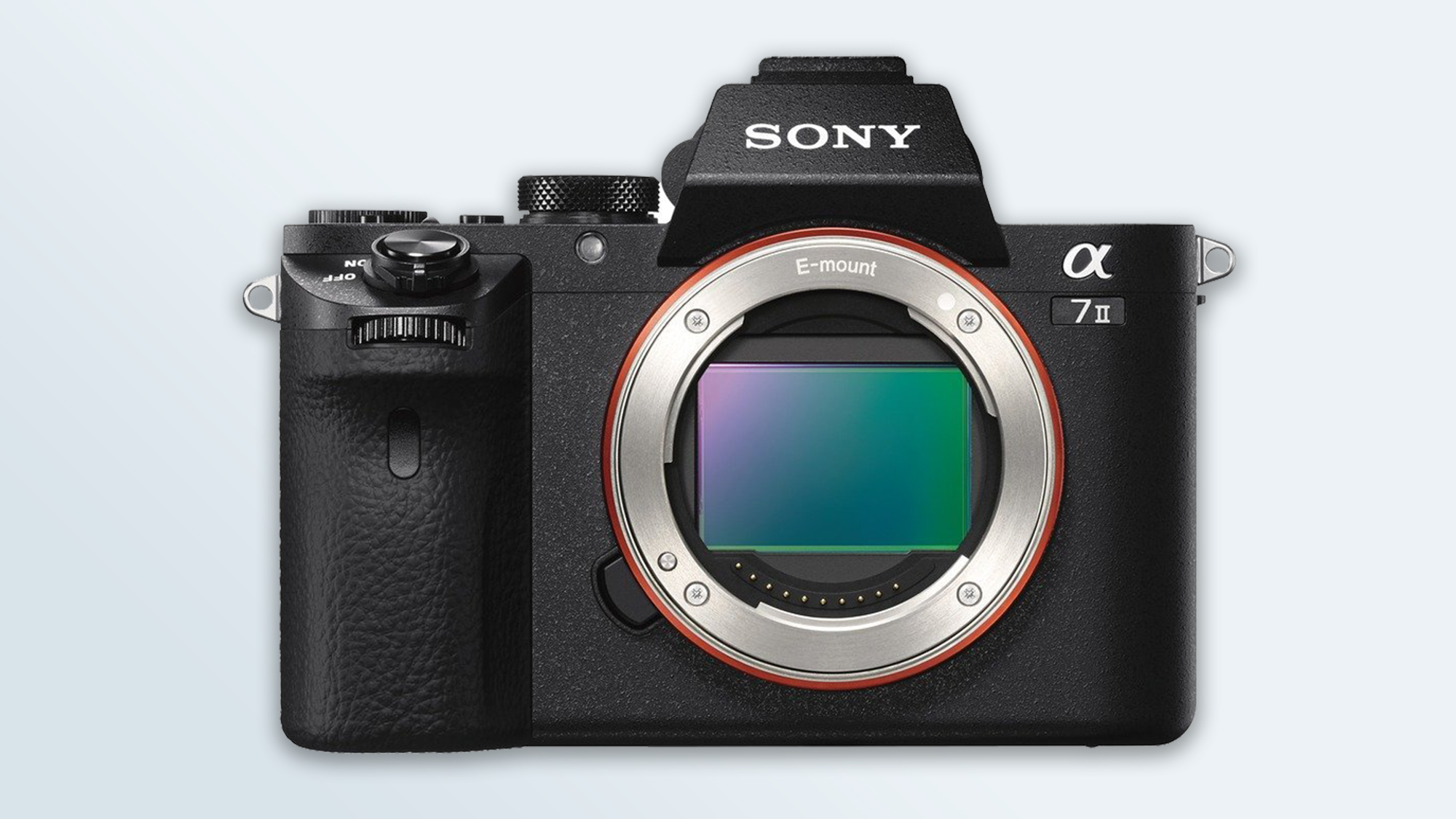
10. Sony A7 II
The best full-frame mirrorless camera
Megapixels: 24.7 full-frame CMOS | Lens Type: Interchangeable | ISO Range: 100-25,600 | Image Stabilization: 5-axis in-body | Video (Max Resolution): 1080p/30 fps | Shooting Speed: 11 fps | Display: Articulating 3-inch LCD | Wi-Fi: Yes | Battery Life: 350 shots | Size/Weight: 5 × 3.87 × 2.37 inches, 1 pound, 3.6 ounces (body only)
Effective 5-axis image stabilization
Bright, clear pictures
Fast access to settings
Surprisingly small
Slow writing to memory card
Quirky autofocus
Sony pioneered the full-frame mirrorless camera, and one of its older models, the Sony A7 II, has come down in price to around the $900 mark, making it the best camera for those who want a full-frame mirrorless system without paying through the nose. The A7 II has a 24.7-MP sensor and 5-axis in-body stabilization, which combine to produce some amazing photos, even in darker conditions.
We also liked how compact the A7 II is, as well as its sturdy magnesium body. Controls are easy to access, and several buttons are customizable, allowing you to have your favorite settings just one push away. However, this camera does show its age: Its 3-inch display lacks a touchscreen, its max video resolution is 1080p/30 fps, and its battery life is a pretty weak 350 shots. At this price, though, you'll be able to afford an extra battery or two.
Read our full Sony A7 II review .
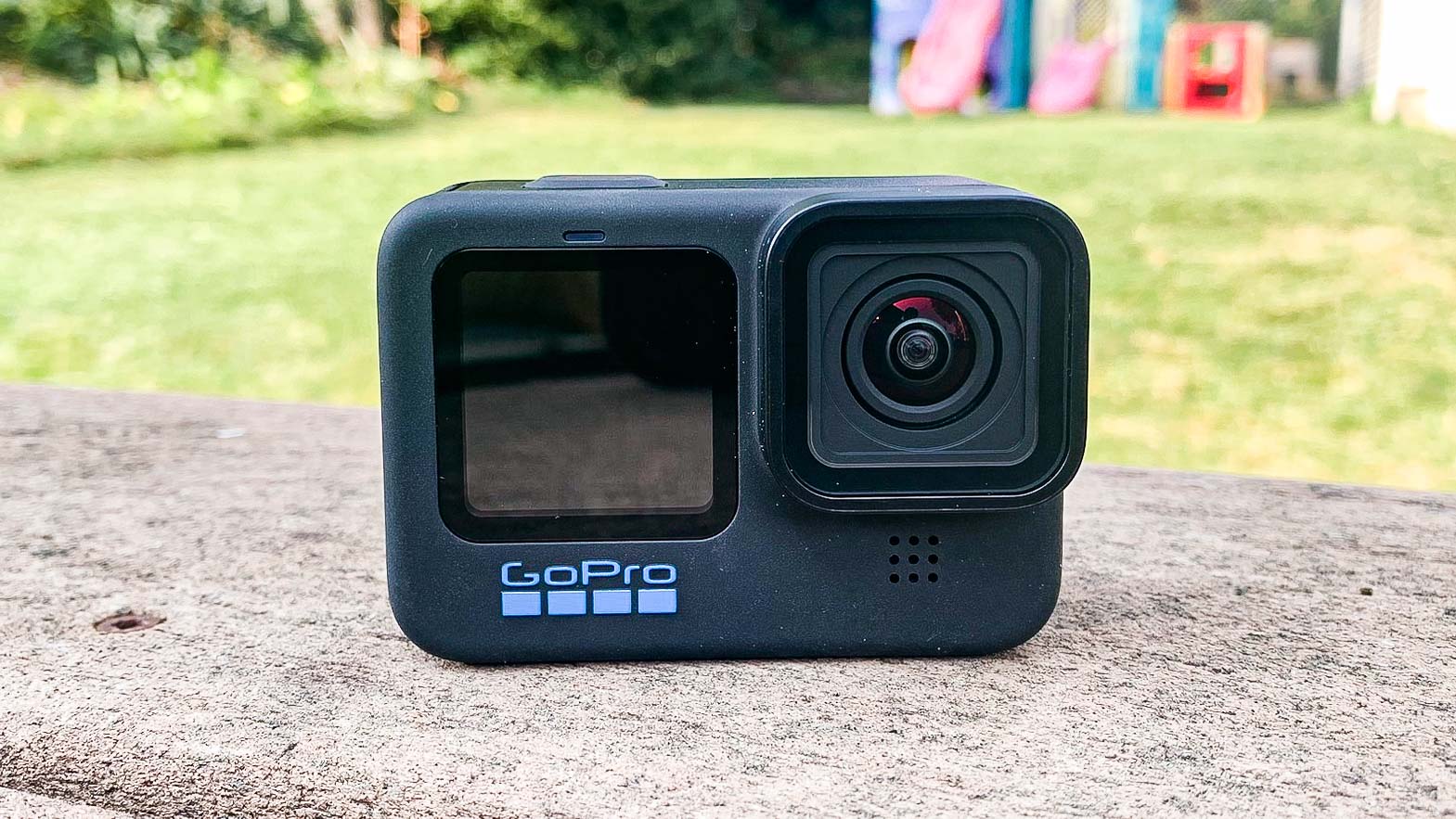
12. GoPro Hero10 Black
The best action cam overall
Max Video Resolution: 5K/60 fps | Max Photo Resolution: 23 MP | Touch Screen: Yes (2) | Battery Life: 1:41 | Water Resistance: 33 feet | Size: 2.75 x 1.9 x 1.6 inches | Weight: 5.3 ounces
Excellent image stabilization
Removable lens
Media "Mods" add functionality
Heavy
It may not look like much has changed from the Hero9 Black, but the new GoPro Hero10 Black is a far better camera on the inside. For starters, it has an upgraded processor which enables it to capture video at 5.3K/60 fps, as well as 2K video at 240 fps, and 4K video at 120 fps. The larger 23MP image sensor is also a nice bonus, and it's even a little lighter than the previous model.
The biggest upgrade, though, is its improved image stabilization; you can now tilt the camera by as much as 45 degrees and it will still smooth things out. The only real drawback is that battery life suffers a little from these upgrades, but it's still by some distance the best action camera on the market.
Read our full GoPro Hero10 Black review .
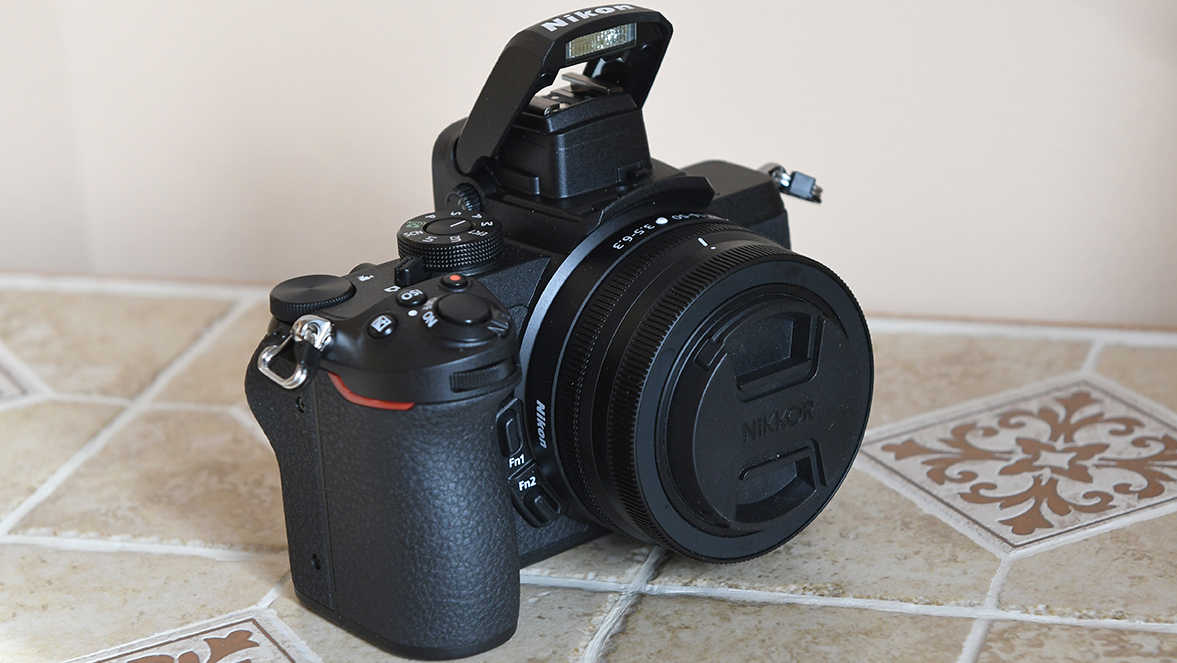
12. Nikon Z50
A versatile mirrorless camera at a good price
Megapixels: 20.9 | ISO range: 100-51,200 | Built-in Flash: Yes | Shooting Speed: 11 fps | Size/Weight: 5 x 3.7 x 2.4 inches / 14 ounces | Viewfinder: Yes | Display: 3-inch flip-down touchscreen | Battery Life (CIPA): 300 shots
Great image quality
Excellent feature set
Slow-motion 4K video
No in-body image stabilization
Flip-down LCD blocks tripod mount
The Nikon Z50 isn't a full-frame mirrorless camera like the Z6 and Z7 models, but it's available at a much cheaper price of around $850 (body only) and comes in a much smaller package, making it a great choice for Nikon fans who don't want to spend upwards of $1,000.
It offers a solid feature set including a 3.2-inch touchscreen that flips down by 180-degrees and a sharp 3-inch electronic viewfinder, and its 20.9MP stills are detailed and colorful. It's a fine performer in low light, too, handling noise well up to ISO 6400. The lack of in-body image stabilization counts against it, but otherwise it's an impressive option in an increasingly crowded space.
Read our full Nikon Z 50 review .
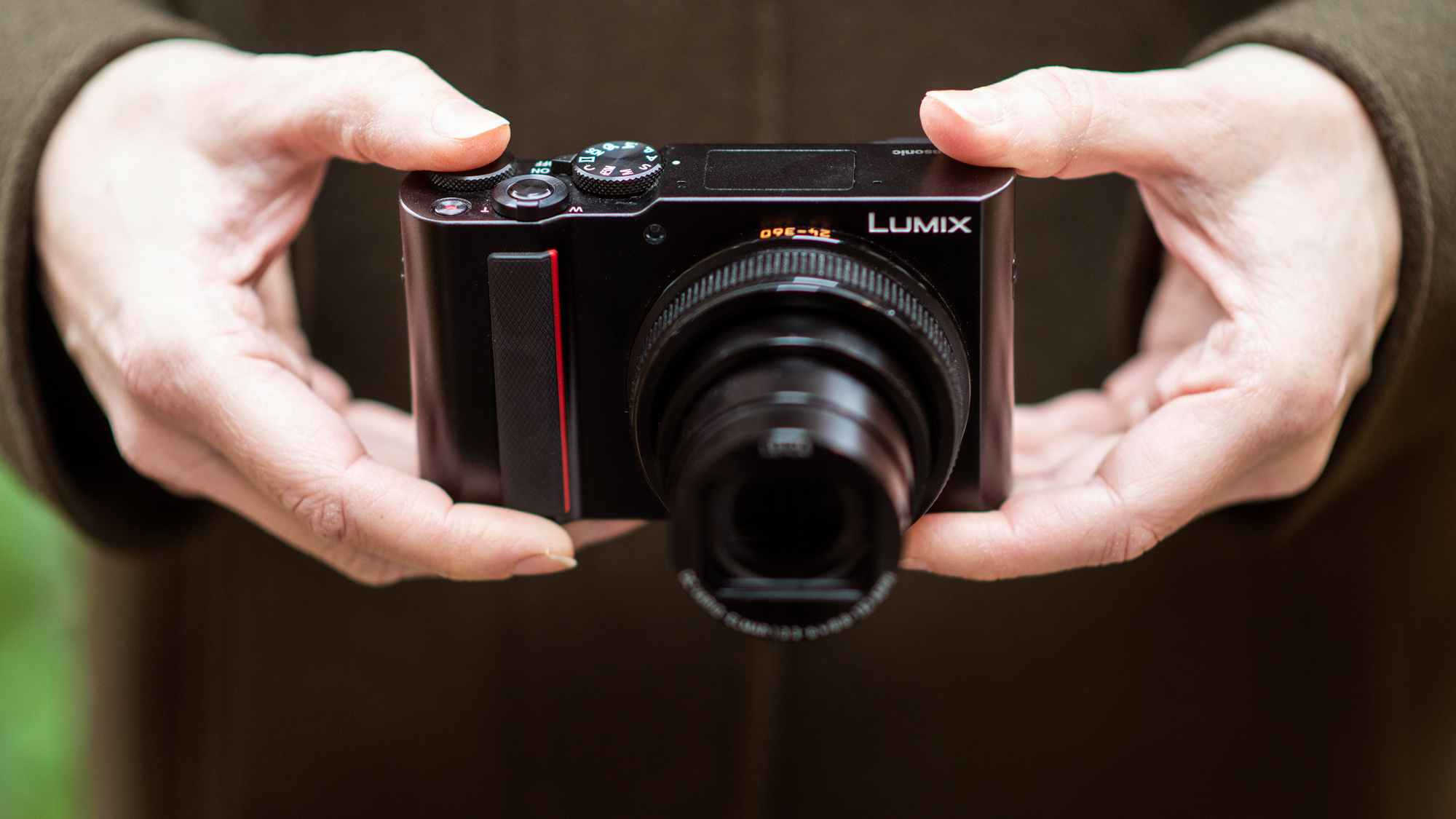
13. Panasonic Lumix ZS200
A great pocketable travel camera
Megapixels: 20/1-inch sensor | Lens Type: 15x optical zoom (24mm-360mm equivalent) | ISO Range: 100-25,600 | Video (Max Resolution): 4K/30 fps | Shooting Speed: 10 fps | Display: 3-inches | Wi-Fi: Yes | Battery Life: 370 shots | Size/Weight: 4.4 x 2.6 x 1.8 inches/12 ounces
Long optical zoom lens
Compact
Sharp electronic viewfinder and touch-screen LCD
No hot shoe for an external flash
Poorly organized controls and settings
Packing a fantastic, sharp 20-MP 1-inch sensor and 15x optical zoom lens in a pocket-friendly body makes the Panasonic Lumix ZS200 as the best camera for those who want to take great vacation photos, but don't want to schlep a larger mirrorless or DSLR around. This camera measures just 4.4 x 2.6 x 1.8 inches and weighs 12 ounces, so you can stuff it in a pocket with ease.
The ZS200 has plenty of physical controls for its size, and still manages to pack in an electronic viewfinder — a must for those days when the sun washes out the camera's non-swiveling 3-inch touchscreen. We found that the ZS200 performed well in a variety of situations, including low-light photography; we were able to shoot as high as ISO 6400 without image noise becoming too much of a distraction. While there's no hot shoe, the camera does have a pretty robust built-in flash. And, the ZS200 can record 4K video as well, which should get you some really nice vacation home movies.
Read our full Panasonic Lumix ZS200 review .
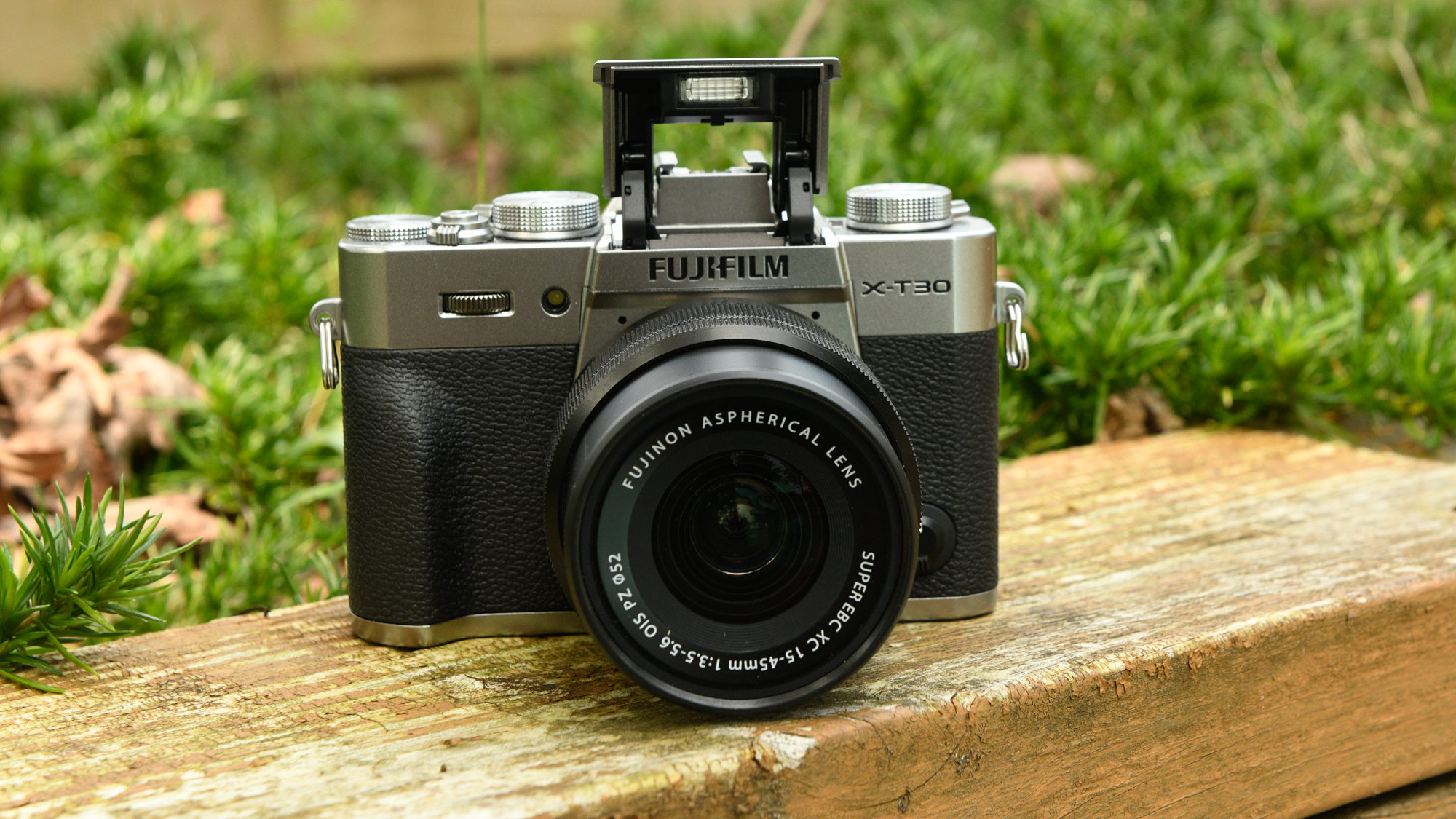
14. Fujifilm X-T30
Amazing retro-styled mirrorless camera
Megapixels: 26.1MP APS-C | Lens Type: Interchangeable | ISO Range: 160-12800 (80-51200 extended) | Image Stabilization: in-lens only | Video (Max Resolution): DCI 4K (4096 x2160) at 30/24p | Shooting Speed: 30 fps | Display: Articulating 3-inch touchscreen | Wi-Fi: Yes | Battery Life: 380 shots | Size/Weight: 4.7 x 3.3 x 1.8 inches 13.5 ounces (body only)
Solid image quality
Responsive touchscreen
Excellent feature set
10 minute 4K recording limit
No in-body image stabilization
Boasting many of the features as the more expensive X-T3, the Fujifilm X-T30 is one of the best mirrorless cameras you can find for less than $1,000 and well deserving of its place on our best camera overall list. We love its retro look and abundance of dials, as well as its more modern articulating touchscreen.
The X-T30 took fantastic pictures in a wide variety of lighting settings, and there are an abundance of settings and artistic filters to get more out of your photos. It has a fast processor that allows you to take DCI 4K video at 30 fps. However, you're limited to 10-minute clips, so if your main purpose is video, check out the Sony a6600 instead.
Read our full Fujifilm X-T30 review .
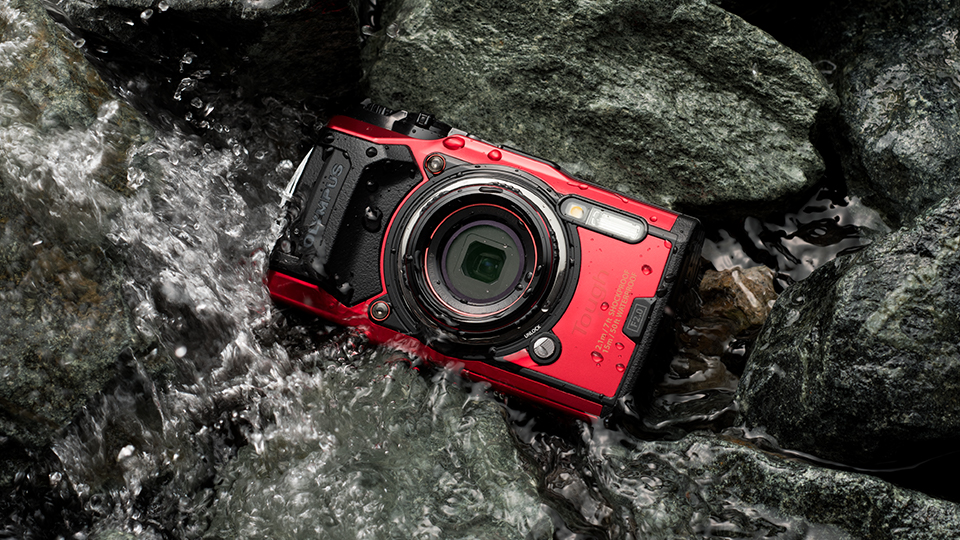
15. Olympus Tough TG-6
Best waterproof camera
Megapixels: 12MP | Lens Type: 24mm-100mm | ISO Range: 100-12800 | Image Stabilization: Sensor-shift | Video (Max Resolution): 4K/30 fps | Shooting Speed: 5 fps | Display: 3-inch/460,000 dots | Wi-Fi: Yes | Battery Life: 380 shots | Size/Weight: 4.4 x 2.6 x 1.3 inches/8.8 ounces
Menus, dials and controls offer multiple access points to settings
Impressive macro features
Captures RAW images
Struggles in low-light situations
Menu structure is somewhat confusing
The Olympus Tough TG-6 is the best waterproof camera, able to withstand depths of up to 50 feet, which isn't the deepest among compact point-and-shoots, but will suffice for snorklers. With its 4x optical zoom lens (24mm-100mm), which has a wide, f/2.0 maximum aperture, the TG-6's lens offers very good quality photos and beautiful video at 4K-resolution. It can also shoot RAW photos, which means it will do a better job than most in darker underwater scenes, and the Olympus features several special underwater modes, as well.
It comes with a versatile flash that lets you adjust the amount of illumination, which is a rare feature on a point-and-shoot. This camera can also survive almost any kind of abuse on land, including up to 220 pounds of pressure, 7-foot drops and temperatures down to 14 degrees Fahrenheit. In addition to Wi-Fi and GPS, the TG-6 includes an electronic compass.
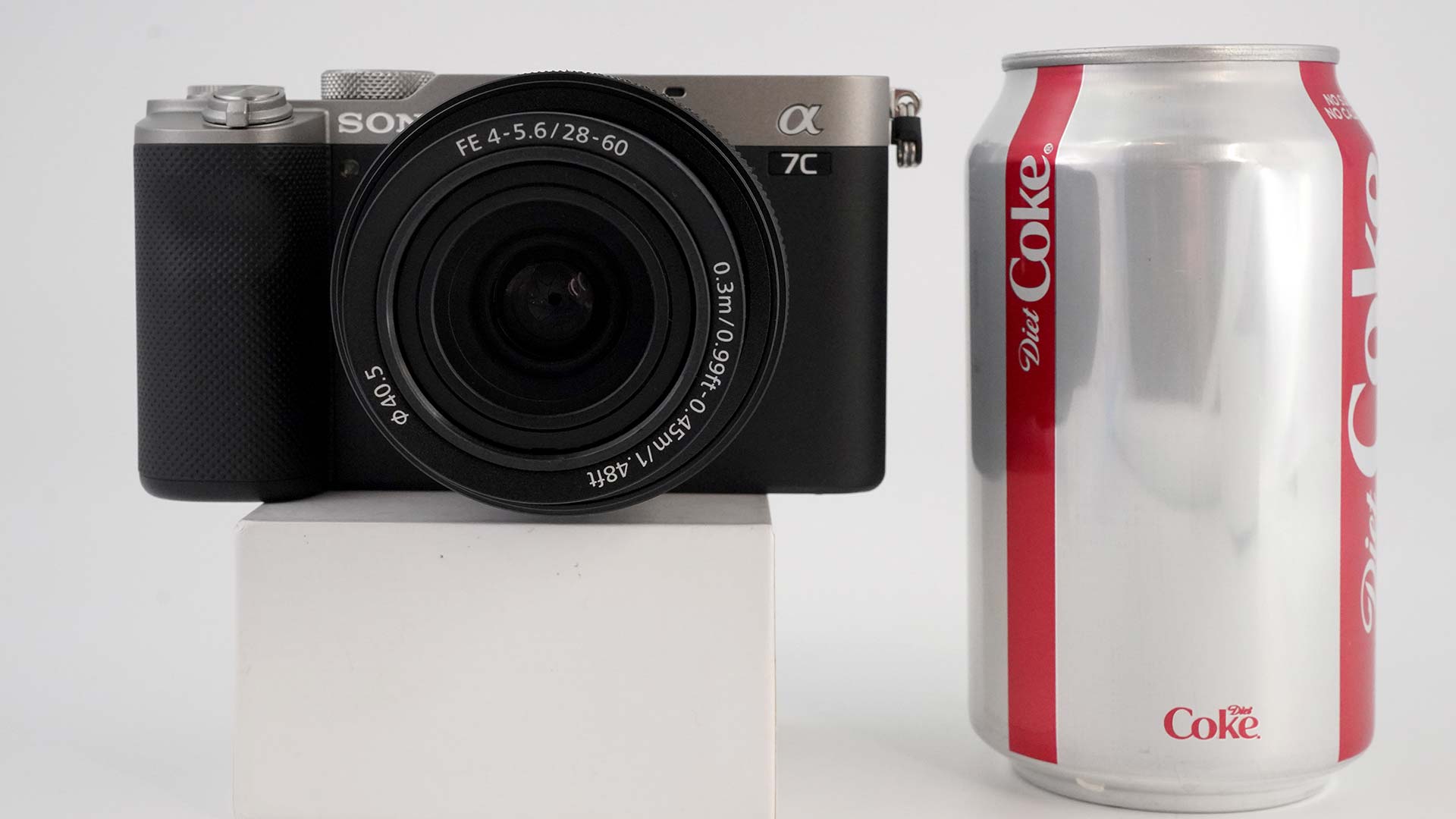
16. Sony A7C
The best compact full-frame camera
Megapixels: 24.2MP | Lens type: Interchangeable | ISO range: 100-51,200 (expandable to 50 and 204,000) | Image stabilization: 5-axis in-body image stabilization | Video (Max Resolution): 4K @ 30 fps | Shooting speed: 10 fps | Display: 3in LCD | Wi-Fi: Yes | Battery life: 740 shots (CIPA) | Size/weight: 4.9 x 2.8 x 2.2 inches; 18 ounces
Tiny and lightweight body
Powerful 5-axis in-body image stabilization
Excellent battery life
Versatile AF modes
Flexible LCD
Small EVF
Lacks front dial and other controls
Single memory-card slot
Sony proudly boasts that its mirrorless A7C is the smallest and lightest interchangeable lens full-frame camera in the world, and it really is a marvel of engineering. Gone are the days when you'd get shoulder-ache from carrying around a hefty full-frame DSLR — with a weight of just 17 ounces, you'd hardly know the A7C was even there. Add in the similarly featherweight 28-60mm kit lens and you have a quality camera that you can easily take with you on trips out. Sony has made some compromises to achieve that small footprint, though; it lacks some of the controls you might expect and the EVF could be bigger. It's not cheap, either — but on the plus side it's a great performer, serving up sharp images and video with a wide dynamic range. If size is you main consideration, it's well worth a look.
Read our full Sony A7C review
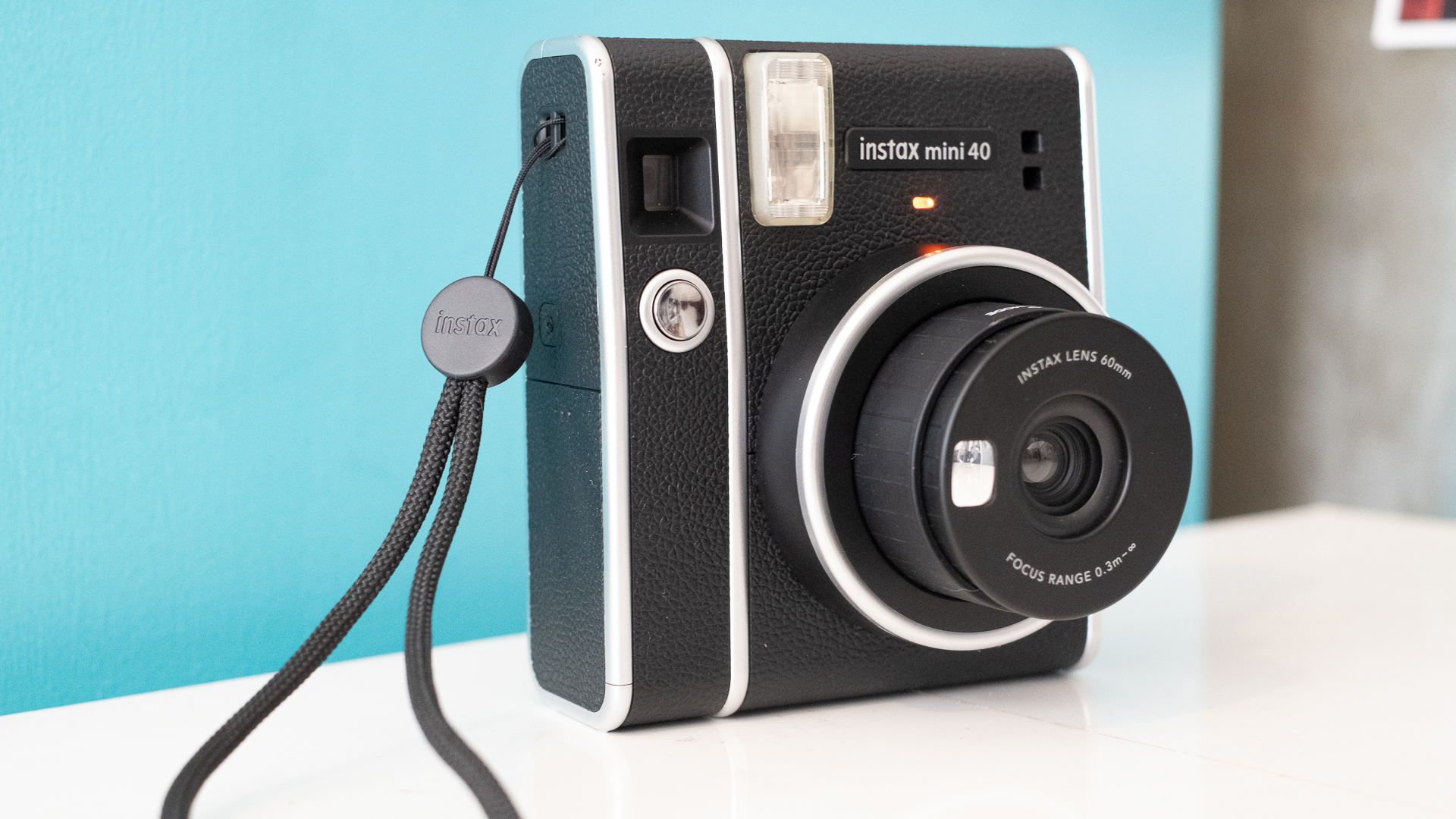
17. Fujifilm Instax Mini 40
Best instant camera for most people
Photo type/size: Fujifilm Instax Mini (1.8 x 2.4 inches) | microSD slot: No | Smartphone app: No | Battery: 2 AA batteries, included | Size/Weight: 4.1 x 4.7 x 2.5 inches / 11.6 ounces
Excellent image quality
Easy to use
Cool retro looks
Pricey Instax film
No creative modes
The Mini 40 is more than just an instant camera — it's an instant camera in a seriously cool retro body. Alright, so that alone isn't enough to make it worthy of recommendation, but the fact that you'll actually want to take it out and show it off certainly doesn't hurt. Fortunately, Fujifilm hasn't forgotten the really important stuff here: the Instax Mini 40 is incredibly simple to use and takes lovely photos, with vibrant colors and good exposures.
While it lacks the bells and whistles of some instant cameras — there's no smartphone app and it can't double as a printer, for instance — it's not without any features either. So, you do get a selfie mode, plus a constantly firing flash that gives it better skills in low-light conditions. At less than $100, it's the kind of camera you could treat yourself to for a holiday or special occasion and have lots of fun with.
Read our full Fujifilm Instax Mini 40 review
How to choose the best camera for you
There are a lot of factors that go into choosing the best camera for you. The first question you should ask yourself is what do you plan to shoot? If you're doing more portrait photography, and don't plan on moving the camera around a lot, a DSLR may be the best way to go. If you're looking for something more mobile, a mirrorless camera is probably a better bet. Be sure to check out our DSLR vs. mirrorless camera guide, which goes into detail about those two camera systems, and also scroll down for a bit more info about all of the options.
It's important to be realistic about your abilities and your intended use, as you can easily spend thousands of dollars on equipment that you don't need, or don't know how to use. Before making a purchase, it's also worth your time to go to a camera store to see how a particular model feels in your hands, and how comfortable you are holding it.
What different types of camera are there?
DSLRs
DSLRs — or digital single-lens reflex cameras — use a mirror to reflect light from the lens on to the sensor, and as a result are bigger and heavier than mirrorless cams. But they're still a great choice for beginners and enthusiasts alike, thanks to the ability to swap out lenses, good handling, sturdy build quality and excellent battery life. Some are also quite cheap these days, and they also benefit from large lens and accessory lineups. Canon and Nikon are the main players, with Pentax another option. Prices can range from a few hundred dollars to several thousand, but you can get a good one for as little as $450.
Here's our guide to the best DSLR cameras.
Mirrorless
These do away with the mirror of a DSLR but have the same advantage of being able to change the lens. As camera makers have switched to mirrorless they tend to get the latest tech, so they are often faster and have better autofocus and video options, plus features such as in-body stabilization. They're smaller and lighter, too, but battery life is not as good and there aren't as many lenses. Canon and Nikon both make mirrorless cams now, but the biggest player is Sony. Fujifilm, Olympus and Panasonic are all alternatives. Prices are similar to DSLRs.
Here's our guide to the best mirrorless cameras.
Point-and-shoot cameras
Also known as compact cameras, they can't swap lenses but are much smaller and lighter than either DSLRs or mirrorless cams. Some are small enough to fit in a pocket and they make great travel cameras. This is a broad category, with many different options; you can choose one for under $100 that you use simply as an alternative to a smartphone, or spend $1000 and get something with a big sensor and that takes photos to rival those from a DSLR. Sub-categories include tough cameras that you can use underwater or in extreme conditions and bridge cameras, which have a large body and very long zoom range.
Here's our guide to the best point-and-shoot cameras.
Instant
As the name suggests, instant cameras give you a physical photo as soon as you press the shutter (or a few seconds afterwards). They're basically what the old Polaroid cameras were, but updated — and indeed, Polaroid still makes some of the best. Many of them use different film formats that vary in size, so make sure you choose one that fits your needs. And also look out for extra features such as app integration and a flash.
Here's our guide to the best instant cameras.
Action cameras
These tend to be focused more on video than stills, although they will all do both. GoPro is the main player here (check out our guide to the best GoPro cameras for more), but all are designed to capture your daring exploits in (ideally) 4K footage.
Here's our guide to the best action cameras.
Cameras vs smartphones: Do you even need a digital camera?
These days, almost everyone has a very capable camera in their pocket, in the form of a smartphone. So is there still a need for a dedicated camera in 2021? To an extent, that depends on what type of camera you're talking about.
The best camera phones have now reached a level that would have seemed impossible a few years, with the likes of the iPhone 12 Pro Max and Samsung Galaxy S21 Ultra packing multiple lenses, large sensors (for a phone) and advanced software tricks. People can and do take incredible photos with their phone every day, and in some situations there really is no need for a dedicated camera.
But some types of camera still have key advantages over a phone. DSLRs and mirrorless cams, for instance, are still capable of taking better images than a smartphone in many situations.
That's partly due to sensor size — even the biggest smartphone sensors are many times smaller than those in an enthusiast DSLR. And because sensor size plays a key role in how much light a camera gathers, that has a massive effect on the overall quality of an image.
Lenses are another factor: while smartphones may have one or two wide-angle lens plus one telephoto lens, mirrorless cams and DSLRs have a choice of dozens, each optimized for its specific focal length or task.
Instant cameras can also do something that smartphones can't, while rugged cameras also have an advantage in one specific area (namely that they won't break if dropped down a mountain). With compact cameras, it's a different matter though, and unless you're looking for a really long zoom range, a smartphone may now be a perfectly good alternative.
Of course as the old adage has it, the best camera is the one you have with you — so either way, just make sure you get out there and use it.
How we test the best cameras
Regardless of the type of camera we review, they're all subjected to a similar testing regimen: we use them in a variety of settings, including low light, outdoors, indoors and more. We also photograph a number of subjects, such as people and pets, to see how well the camera captures skin tones. If a camera comes with a kit lens, we generally use that lens with the camera, to more closely emulate the same experience as consumers purchasing the camera.
In addition to still and video quality, we also rate the camera based on its ease of use: are the physical controls easy to access, and are the menus logically laid out? Finally, we evaluate the camera's battery life and other features, such as wireless control. Once we've done all that, we're in a position to decide whether a model deserves to be on our best camera list.
Be sure to check out all of our camera picks:
Best DSLR cameras | Best action cameras | Best waterproof cameras | Best point-and-shoot cameras | Best instant cameras | Best mirrorless cameras | Best cheap cameras | Best GoPro camera | Best GoPro accessories | Best drones | Best 360 cameras | Best iPhone lenses | Best iPhone tripods |DSLR vs. mirrorless | Best Nikon accessories | Best Sony a6000 accessories | Best ring lights | Best ring lights for phones | best cameras for vlogging
The best apps and software for editing, managing, and sharing your photos:
Best photo organizer apps | Best photo storage sites | Best photo editing software | Best photo editing apps | Best photo collage apps

As U.K. Editor in Chief on Tom's Guide, Marc is responsible for the site's U.K.-focused output as well as overseeing all gaming, streaming, audio, TV, entertainment, how-to and cameras coverage. He previously edited the tech website Stuff and has tested and written about phones, tablets, wearables, streaming boxes, smart home devices, Bluetooth speakers, games and much more. He also spent years on a music magazine, where his duties mainly involved spoiling other people's fun, and on a car magazine. An avid photographer, Marc likes nothing better than taking pictures of very small things (bugs, his daughters) or very big things (distant galaxies). When he gets time, he also enjoys gaming (console and mobile), cycling and attempting to watch as much sport as any human can (particularly cricket).
Best Cameras For Wildlife Photography (2021)
Source: https://www.tomsguide.com/uk/us/best-cameras,review-2196.html
Posted by: jonesmucconothave.blogspot.com

0 Response to "Best Cameras For Wildlife Photography (2021)"
Post a Comment